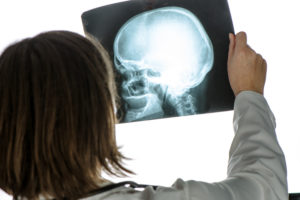Chronic traumatic encephalopathy (CTE) refers to the type of brain degeneration caused by multiple traumatic brain injuries (TBIs). Sports fans will recognize CTE as being the central focus of the movie Concussion, which was based on the true story of a doctor’s exploration of the link between CTE and football injuries. Although the focus of CTE research, at least in the public eye, has been on TBIs caused by contact sports, CTE can also result from head traumas caused by motor vehicle accidents, slip and fall injuries, and construction site accidents.
Quest to diagnose CTE more effectively gets a boost
A new study was published in the Journal of Alzheimer’s Disease detailing ongoing efforts to improve the ability of doctors to diagnose CTE in living patients. Currently, the only definitive way to diagnose CTE is after a patient’s death. An autopsy is required to carefully examine the brain tissue for signs of the abnormal changes that indicate CTE. Of course, the problem with diagnosing brain degeneration after death is that it’s harder to help people who are living with CTE.
But with the publication of this new study, researchers are one step closer to making an accurate diagnosis a possibility during the patient’s life. It was a small study, involving only seven participants. They were five veterans and two active duty military servicemembers who reported sustaining brain injuries and CTE-like symptoms.
How the diagnostic scan works
The study participants were each injected with a radioactive molecular tracer. This particular tracer is called FDDNP. FDDNP works by adhering to abnormal proteins in the brain—the same proteins that develop in patients with CTE. Once the tracer had time to circulate in the body, the study participant was given a positron emission tomography (PET) scan. The PET scan picked up the tracer’s signature, allowing the researchers to confirm the presence of the abnormal proteins in the brain tissue.
Then, the researchers compared these seven scans to the scans of two dozen people with Alzheimer’s disease and 15 retired football players who had a history of brain trauma and exhibited signs of CTE. The scans were also compared to 28 healthy control subjects. The researchers discovered that their scans were similar to those of the football players, but different from the scans of the other two groups.
More research is needed before the test can be considered clinically reliable, but this small study is encouraging for families affected by CTE-like symptoms.
Consult a personal injury specialist serving New York and New Jersey
As public awareness of CTE grows and medical technology continues to improve, it’s only to be expected that more cases of CTE will be diagnosed prior to death. But even if a loved one was only diagnosed with CTE after his or her death, the family members may still bring a civil claim against any negligent parties. You may have grounds for a lawsuit if a TBI occurred as a result of a slip and fall injury, construction site accident, or a truck, car, motorcycle, or pedestrian accident.
Talk to the traumatic brain injury lawyers at Kantrowitz, Goldhamer & Graifman. Our personal injury team is proud to provide effective legal advocacy services to families in Bergen County, NJ, and throughout the NJ and NY area. Call us toll-free at 888.624.4916 today to request a case review.
Additional resources about traumatic brain injuries
- NPR, Scientists Hunt For A Test To Diagnose Chronic Brain Injury In Living People, https://www.npr.org/sections/health-shots/2018/07/17/629593428/scientists-hunt-a-test-for-chronic-injury-in-living-brains
- Mayo Clinic, Chronic traumatic encephalopathy, https://www.mayoclinic.org/diseases-conditions/chronic-traumatic-encephalopathy/symptoms-causes/syc-20370921






